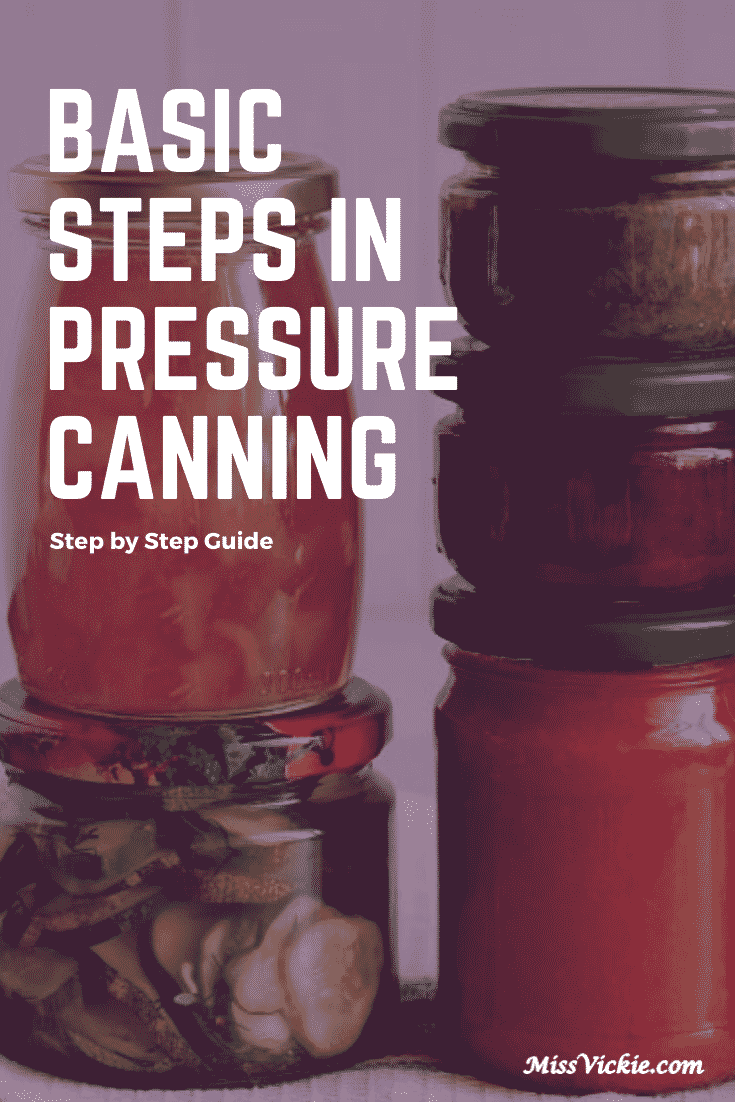
Home canning can be one of the best ways to preserve some of your favourite seasonal foods while ensuring that your pantry is free of commercially processed foods, many of which are harmful and come with tons of additives and chemicals. Though there are two primary methods used for canning, that is, water bath canning and pressure canning, pressure canning appears to be the most popular among modern home canners. Pressure canning is not only faster compared to water bath canning, but it also has a higher chance of success.
Pressure canning is typically done for low acid foods. A lot of veggies fall under low acidic foods but so do most poultry, meat and seafood. It is not recommended that you attempt to can low acid food with any other method such as a boiling water bath, other than a pressure canner because the temperatures in a simple water bath are not high enough to kill of the bacteria that causes botulism.
Basic Steps in Pressure Canning
Set up your equipment
- First, you will need to make sure that your pressure canner is clean. Before each canning process, always check the dial gauge on the pressure canner for accuracy, fallen or missing parts, rust or anything else that might impact accuracy. The gauge is very sensitive and should never come into contact with liquids. Check that the other parts of the canner such as the sealing ring, rubber gasket, overpressure plug, and so on are ok.
- Inspect your jars for any cracks, nicks or shar edges, the screw bands and rings should be inspected for rust or dents. Only lids and bands in perfect condition can be used to ensure that an airtight seal has been created. Keep the lids in boiling or very hot water until they are ready to use.
- Fill your jars one at a time and leave at least an inch of space for expansion. Insert a spatula along the edge of the jar and run it between the food to remove any existing air pockets. Wipe the rim carefully to ensure proper sealing occurs.
- Remove your lids from the boiling water and place them on the jars, if they stick together, dip them in cold water then submerge them again in boiling water. Make sure that you screw the ring band as tightly as you can to seal completely.
- Place your rack inside the canner and add hot water, not boiling water, and place your jars on the rack as you continue filling them. Make sure the jars are not touching to allow steam to flow slowly between them.
- Fasten the lid of the canner securely and heat at the highest setting until you see steam flowing from the vent pot or petcock.
- When the pressure reading on the gauge indicates that the recommended pressure has been reached, you should start timing the process.
- Regulate the heat under the canner so that a constant pressure can be maintained. The cans should star to jiggle or rock.
- Once the timing is over, you should turn the heat off and remove the canner from the heat. Allow it to depressurize without force cooling it.
- After cooling, unfasten the lid and remove it carefully so that you do not get burned by steam.
- Remove the jars and allow them to cool. Once complete cooled, press the lid with your finger; if it remains down, consider the jar sealed.
- Do not turn the lids upside down to test if it is leaking. Label each jar and store it properly in a cool, dry area.